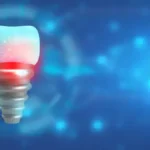In the evolution of dental science, the subperiosteal implant has reemerged as a sophisticated solution for patients with bone loss who cannot undergo traditional endosseous procedures. Once considered a relic of mid-20th-century dentistry, this implant type has regained attention thanks to advancements in imaging, biomaterials, and digital surgical planning. For many patients, the term “subperiosteal implant” represents hope—an alternative path to restoring both function and confidence when conventional dental implants are not feasible. Within the first examination, dentists can identify who benefits most: individuals with insufficient jawbone density for screw-type implants but who still seek permanent stability. Today, subperiosteal implants are no longer merely an option of last resort but a highly engineered, precision-based treatment that embodies the union of art, science, and technology in oral reconstruction.
The Origins and Evolution of the Subperiosteal Implant
The concept of the subperiosteal implant originated in the 1940s, developed as a response to bone deficiencies that limited the success of early implant designs. Initially, cobalt-chromium frameworks were fabricated using complex cast impressions of the patient’s jaw. These metal frameworks rested atop the bone but beneath the periosteum, with posts protruding through the gums to support prosthetic teeth. Over time, however, early subperiosteal implants faced challenges—chiefly poor biocompatibility and bacterial contamination. The tide turned with the advent of medical-grade titanium and the rise of digital imaging. Three-dimensional scans allowed for precise fitting, eliminating the guesswork that once hindered the technique. As Professor William Schatz once remarked, “We’ve gone from sculpting metal in plaster to printing precision frameworks in pixels.” This modern renaissance has positioned the subperiosteal implant as an advanced, patient-specific restoration strategy.
Understanding the Structure: Design and Function
The subperiosteal implant is distinct from the endosseous type, which anchors directly into the jawbone. Instead, it sits atop the bone but beneath the periosteum—a thin layer of connective tissue enveloping the bone. The custom-fabricated framework mirrors the patient’s jaw contour and supports a prosthetic arch through vertical extensions emerging from the gums. These structures can be crafted using titanium alloy or, in newer approaches, hybrid titanium-zirconium composites for enhanced strength and corrosion resistance. The framework’s lightweight lattice design promotes soft tissue integration and reduces pressure points. Each extension is meticulously positioned to align with prosthetic crowns, achieving both function and aesthetics. This unique configuration allows patients with significant bone resorption to regain full oral functionality without the need for grafting.
| Component | Description | Clinical Function |
|---|---|---|
| Framework | Custom 3D-printed titanium structure | Anchors beneath the periosteum |
| Support Posts | Vertical connectors passing through gum tissue | Hold prosthetic crowns or bridges |
| Periosteal Contact Zone | Interface between bone and framework | Ensures stability and load distribution |
| Fixation Screws (optional) | Small securing elements | Provide initial mechanical retention |
| Soft Tissue Integration Layer | Treated surface for biological adhesion | Minimizes inflammation and mobility |
How the Procedure Works: From Scan to Smile
Modern subperiosteal implant surgery begins with a detailed diagnostic phase. Cone-beam computed tomography (CBCT) provides a digital map of the jaw’s structure, while 3D modeling software designs a custom-fit framework. Once finalized, the framework is fabricated through laser sintering or CNC milling, ensuring micron-level precision. During surgery, the dentist makes an incision to expose the bone surface, places the framework atop it, and repositions the gum tissue around the vertical posts. Healing typically takes several weeks, after which the prosthesis is attached. “It’s like tailoring a suit for the jaw,” says Dr. Elena Moritz, a maxillofacial surgeon in Berlin. “Every contour, every curve, is designed for harmony.” Patients experience minimal discomfort compared to traditional bone grafts, and functional results can be achieved in a fraction of the time.
Indications and Ideal Candidates
Subperiosteal implants are recommended for patients who lack sufficient bone volume for endosseous implants and either cannot or prefer not to undergo bone grafting. Common indications include severe alveolar resorption due to aging, trauma, or long-term denture wear. They are also suitable for individuals with systemic conditions that complicate bone regeneration. In particular, patients with high maxillary sinuses or low mandibular ridges benefit greatly. However, success depends on careful patient selection, including evaluation of soft tissue health and oral hygiene capacity. A multidisciplinary approach—combining radiology, prosthodontics, and surgical expertise—ensures optimal outcomes. As Dr. Amir Zain from Kuala Lumpur notes, “The subperiosteal implant isn’t for every mouth, but when chosen correctly, it’s transformative.”
Benefits and Clinical Outcomes
The resurgence of subperiosteal implants stems from their remarkable advantages in specific patient populations. Unlike bone grafting, which can take months to heal, these implants enable faster prosthetic rehabilitation. Their custom-fitted frameworks distribute masticatory forces evenly, reducing stress on the underlying bone. Additionally, the non-invasive bone interface minimizes risk in medically complex cases. Studies have shown survival rates exceeding 90% over five years when designed with CAD/CAM precision. Patients often report improved comfort and aesthetics compared to removable dentures. “It felt like getting a part of myself back,” shared one patient after surgery in Madrid. The psychological benefits of restored confidence and natural appearance are often as significant as the functional gains.
| Benefit | Clinical Evidence | Patient Impact |
|---|---|---|
| No bone grafting required | Reduces surgical invasiveness | Shorter recovery time |
| Customized fit | Digital precision modeling | Improved comfort and function |
| Rapid restoration | Immediate prosthetic adaptation | Faster return to daily life |
| Durable materials | Titanium alloys resist corrosion | Long-term stability |
| Enhanced aesthetics | Optimized gum contours | Natural appearance restored |
Limitations and Risks
Despite its promise, the subperiosteal implant is not without challenges. Because it lies above the bone, it relies heavily on precise fit and soft tissue healing. Inadequate hygiene can lead to peri-implant mucositis or infection. Additionally, if the framework shifts, it may cause pressure necrosis or discomfort. Long-term success depends on the biocompatibility of materials and the absence of mechanical overload. Patients must be carefully educated about maintenance, as improper cleaning can compromise tissue health. “A subperiosteal implant demands partnership,” says periodontist Dr. Sophie Tan. “The surgeon provides structure, but the patient sustains it through discipline.” While modern technology has reduced failure rates, ongoing monitoring remains essential to maintain integrity.
Material Advancements and Digital Fabrication
The rebirth of the subperiosteal implant owes much to digital manufacturing and material science. Titanium, celebrated for its strength-to-weight ratio and osseointegrative properties, forms the base material. Surface treatments such as anodization and hydroxyapatite coating enhance tissue adhesion and reduce inflammation risk. The introduction of 3D metal printing allows frameworks to be produced directly from patient scans without physical impressions, achieving perfect adaptation. Furthermore, computational stress modeling predicts how the implant will behave under chewing forces, reducing postoperative complications. “We’re not just restoring smiles; we’re restoring biomechanics,” observes engineer-dentist hybrid Dr. Yuki Sato of Tokyo. The combination of AI-assisted planning and biocompatible metals has transformed subperiosteal implantation from experimental to mainstream practice.
Comparing Subperiosteal and Endosseous Implants
Although both serve similar restorative goals, subperiosteal and endosseous implants differ significantly in biological integration and surgical approach. Endosseous implants anchor within the jawbone, requiring sufficient bone height and density. Subperiosteal implants, however, rest atop the bone, making them ideal for atrophic jaws. The latter involves a single-stage surgery without bone drilling, while the former often necessitates grafting. Each option has specific advantages depending on patient anatomy and goals.
| Parameter | Subperiosteal Implant | Endosseous Implant |
|---|---|---|
| Bone Requirement | Minimal | High |
| Surgical Invasiveness | Moderate | High (requires drilling) |
| Healing Time | Shorter | Longer |
| Material Customization | Fully custom-fitted | Standardized screw shapes |
| Common Indication | Severe bone loss | Normal bone volume |
| Long-Term Stability | High with precision fit | High with osseointegration |
Postoperative Care and Long-Term Maintenance
After placement, patients must follow a strict care regimen to ensure healing. Regular saline rinses, soft diets, and antibiotic prophylaxis minimize infection risks. As the tissues adapt, gentle brushing around abutments prevents plaque buildup. Dentists recommend periodic check-ups to assess framework integrity and gum health. Long-term maintenance involves annual radiographic evaluations to detect early signs of bone remodeling or peri-implant inflammation. The prosthesis itself may require adjustments over time due to natural tissue changes. Ultimately, patient cooperation defines success: daily hygiene, non-smoking habits, and dietary mindfulness all prolong implant life. As dental researcher Dr. Peter Lowry summarizes, “The best implant design in the world still needs a disciplined mouth to thrive.”
Patient Experience and Psychological Impact
Beyond clinical outcomes, subperiosteal implants profoundly influence patient confidence and quality of life. Many who suffered from years of denture instability describe an immediate sense of renewal. Being able to eat, speak, and smile without fear of slipping prosthetics has measurable emotional benefits. Psychologists studying oral rehabilitation link implant success with improved social engagement and self-esteem. The emotional relief of permanence—after years of temporaries—often outweighs any residual discomfort. “It’s not just about teeth,” said a patient from Toronto. “It’s about reclaiming identity.” These stories remind practitioners that the true success of dental innovation lies as much in empathy as in engineering.
The Role of Technology: AI, Imaging, and Customization
Artificial intelligence and machine learning have refined the planning of subperiosteal implants. Algorithms analyze jawbone density, simulate force distribution, and predict tissue healing outcomes. High-resolution 3D scanning ensures that each framework fits within micrometric accuracy. Some clinics employ augmented reality during surgery to guide placement in real time, reducing error margins. The integration of AI-based analytics also enables predictive maintenance—identifying patients at risk of complications before symptoms arise. These innovations make subperiosteal implants not just restorative but also preventive. The technology underscores a broader truth: precision in dentistry no longer depends solely on human touch but on the collaboration between clinician and code.
Common Misconceptions and Clarifications
One common myth is that subperiosteal implants are outdated or unsafe. In reality, their modern iterations surpass earlier designs in both safety and longevity. Another misconception is that they are painful or involve prolonged recovery. Most patients resume normal activity within days, and discomfort is typically less than with bone grafting. Some believe the implants appear artificial; however, prosthetic advancements have made aesthetics nearly indistinguishable from natural dentition. The notion that subperiosteal implants are “temporary solutions” has also faded—clinical data now confirm long-term viability exceeding a decade in well-maintained cases. These clarifications are crucial for both patients and clinicians navigating treatment choices in an era of abundant misinformation.
Economic and Global Perspectives
From an economic standpoint, subperiosteal implants offer a cost-effective alternative to extensive grafting and multi-stage surgeries. While initial fabrication may be more expensive due to customization, total treatment time and associated risks are reduced. In developing regions, simplified subperiosteal systems could democratize access to fixed dental solutions. Global dental markets project steady growth in adoption, especially as digital scanning becomes more accessible. Clinics in Europe and Southeast Asia are pioneering same-day fabrication workflows, bridging affordability and precision. “Accessibility through technology is the real victory,” says industry analyst Carla De Souza. This democratization could redefine global oral healthcare, making advanced reconstruction a universal right rather than a luxury.
Key Advantages of Subperiosteal Implants at a Glance
- Ideal for patients with severe bone loss or resorption
- Eliminates need for bone grafting or sinus lift procedures
- Faster healing and immediate prosthetic attachment
- Custom 3D-printed titanium framework ensures perfect adaptation
- Long-term success rates exceeding 90% with proper care
- Enhanced comfort, aesthetics, and patient satisfaction
Future Directions: Biomaterials and Regenerative Integration
The future of subperiosteal implants lies in biomaterial innovation and regenerative synergy. Researchers are exploring bioactive coatings that encourage bone regeneration beneath the framework, effectively converting subperiosteal designs into hybrid osseointegrative systems. The incorporation of stem-cell scaffolds and nanostructured surfaces may soon allow biological bonding between implant and bone. Furthermore, smart sensors embedded in the framework could transmit data on load distribution and tissue response, revolutionizing follow-up care. With AI predicting tissue adaptation and bioengineering advancing integration, the line between artificial and biological restoration continues to blur. As Dr. Lucia Fernandez of Barcelona notes, “The next generation of implants won’t just restore; they’ll regenerate.”
Ethical and Clinical Considerations
As with any medical technology, ethics and patient communication remain central. Transparency about procedure limitations, costs, and maintenance responsibilities is vital. Clinicians must ensure informed consent, especially for older patients or those with systemic illnesses. Additionally, sustainability is emerging as a discussion point—manufacturers are exploring recyclable metals and reduced carbon manufacturing processes. Ethical dentistry now extends beyond patient outcomes to encompass ecological responsibility. Subperiosteal implants, through their efficiency and material reuse, may align well with these environmental goals.
Conclusion: A Renaissance of Precision and Purpose
The subperiosteal implant stands as a testament to how innovation can revive forgotten techniques and align them with modern precision. What was once seen as a compromise has become a centerpiece of digital dentistry’s adaptive intelligence. By merging design accuracy, biocompatible materials, and human empathy, it transcends traditional prosthetics to embody a new philosophy of care. In the hands of skilled practitioners, it restores more than just teeth—it restores dignity, balance, and identity. For patients across the world, the subperiosteal implant is not merely an artifact of dental history but a beacon of modern restoration.
FAQs
1. What is a subperiosteal implant?
A subperiosteal implant is a custom-fitted metal framework placed on top of the jawbone but beneath the gum tissue. It supports prosthetic teeth for patients lacking sufficient bone for traditional implants.
2. Who is an ideal candidate for this procedure?
Ideal candidates include individuals with severe bone loss, those unwilling to undergo bone grafting, or patients seeking quicker rehabilitation with stable, fixed prosthetics.
3. How long do subperiosteal implants last?
With proper care and hygiene, modern subperiosteal implants can last 10 to 15 years or longer, supported by high success rates and biocompatible materials.
4. Are subperiosteal implants painful to install?
The procedure is performed under local or general anesthesia, resulting in minimal discomfort. Recovery is often faster than traditional implant surgeries involving bone drilling.
5. How do subperiosteal implants differ from traditional implants?
Traditional implants anchor within the bone, while subperiosteal implants rest above it. The latter eliminates the need for bone grafting, making it ideal for atrophic jaws or medically complex cases.







